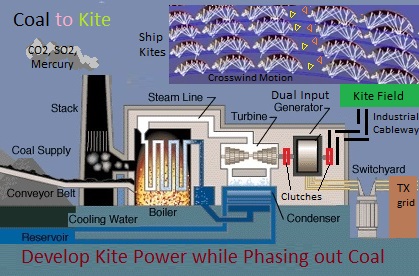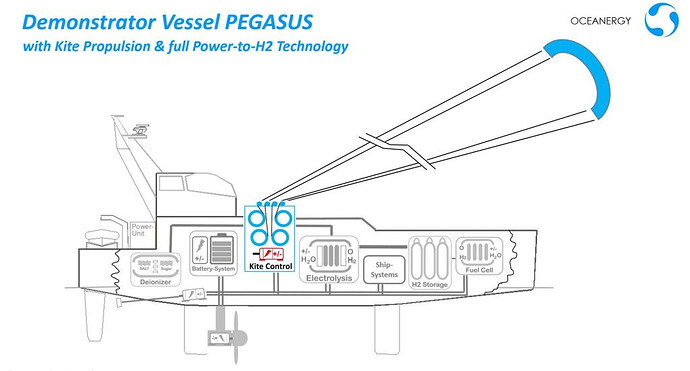Hydrogen is perhaps the least-efficient approach to energy storage commonly discussed. It is an artifact of “a little knowledge”. People congratulate themselves on remembering one of the first scientific facts they learned right after learning to read - as a kid in third grade: Water is H2O, and can be split into H2 and O2 using electricity.
But right away there are major issues:
- Electrolysis is only about 50% efficient. So right away you have tthrown away half the electricity you worked so hard to generate. Imagine if someone sold you a lithium ion battery for your phone and you charged it all the way up then it said “50% charged”. You’d be calling tech support!
- But it gets worse: Now that you’ve used up your electricity creating hydrogen, how are you going to store it? Well you have two main options in most cases:
a) Compress it - once again you will lose perhaps half the energy contained in the hydrogen in compressing it sufficiently to carry around.
b) cryogenic storage: You can instead use half the energy contained in the hydrogen to cool it to a liquid , then store it as long as you can as it boils off. H2 is supposedly a really bad greenhouse gas too, right? So H2 boiling off is “really bad”, right?
Either way, you are now down to about 25% of the original energy you put in.
Retrieving the energy:
There are, again, two main choices for how to get the energy back from hydrogen:
- Burn it in an internal combustion engine such as a turbine or piston engine to spin a generator.
- Use a “fuel cell” to “burn” the hydrogen
Either option is 50% efficient at best, even less for the engine options, especially when you include the generator losses.
So now you are down to getting back, say, a mere12.5% of the energy input.
OK so now imagine you charge your phone to 100%, unplug it and see it suddenly is down to 12.5% charge. What would you do? Could you even leave the house after losing 87.5% of your “100% charge”?
If someone told you they had developed a new “improved” lithium ion battery that could return about 12.5% of the energy input, you’d have to tell them they might want to check in at the local mental health clinic and get checked out to see what is wrong with their brain, right?
Wait, let’s ask Elon Musk what he thinks of hydrogen for energy storage:
Tesla CEO Elon Musk calls hydrogen “the most dumb thing I could possibly imagine for energy storage.”
Elon has proven he can think beyond “bumper-sticker-slogan”-level reasoning.
What is afflicting many people in the face of “global-warming derangement syndrome” is called “Single Factor Analysis”.
“Single-Factor Analysis” is when people take a single fact, such as “Hydrogen can be made from water then used as fuel”, and, without considering all the OTHER facts that go along with the ONE FACT, concoct a complicated story around the SINGLE FACT, while NEGLECTING all the CONSEQUENTIAL FACTS that complete the story. They present a partial story as a complete story, when no such thing is the case at all!
So we are presented with “hydrogen cars!” and “hydrogen airplanes!” which admit they will require up to half the volumetric space in the vehicle just to store the hydrogen, to end up with perhaps 10% of the energy input. So now your airplane can carry half the passengers, to make room for all that super-low-density, ultra-inefficient fuel.
If you choose internal combustion engines to get the energy back, you’ll only get about half the power from the same size engine because hydrogen has a very low energy density compared to hydrocarbon fuels. So congratulations, your airplane will need an engine twice the size and weight, to get the same power as hydrocarbons deliver, from hydrogen fuel. Wow, with hydrogen, almost EVERY FACTOR is twice as bad! Multiply them all together and you have an energy disaster!
If you want to run hydrogen through steel pipes, or store it in steel tanks, hydrogen ruins steel by “hydrogen embrittlement”. Currently, companies like GE struggle to include even a small percentage of hydrogen in the fuel mix of a gas turbine.
ALSO: Pulling a ship by kite so a water-turbine can generate electricity involves two (2) layers of fluid-dynamic inefficiency, and one level of electromagnetic inefficiency. The kite is only going to use a fraction of the wind’s energy to tow the ship, THEN the underwater turbine is going to cut that in half (Betz coefficient), as a start. And the generator will only be about 90% efficient. So the entire process, from beginning to end, yields a less than 5% efficiency.
Average people, including politicians, voters, and investors, are unlikely to appreciate any of this. They go by slogans and bumper-sticker logic. They are thinking “100% energy return” instead of the actual “5% energy return”.
So, all-in-all, I’d say hydrogen production from ships towed by kites is a non-starter of an idea, but today, in light of global-warming derangement syndrome, where facts don’t matter, just feelings, and lines of reasoning must be reduced to a level of simplicity that can fit on a bumper-sticker, this idea could easily get funded, and turn into one more clean-energy bankruptcy, and you can then read about when the auction of the remaining assets is announced.
More likely though, there are enough sensible people around, like Elon Musk, with sufficient adult-level awareness to analyze things beyond a knee-jerk reaction to some slogan, to prevent the waste of time, energy, steel, money, and manpower that such a futile project would entail, that you will never see such a ship built and run.
Maybe for now they should just stick to trying to convince cargo shipping companies to try being pulled by a kite just as transportation, without trying to save the world twice by producing hydrogen fuel too.




